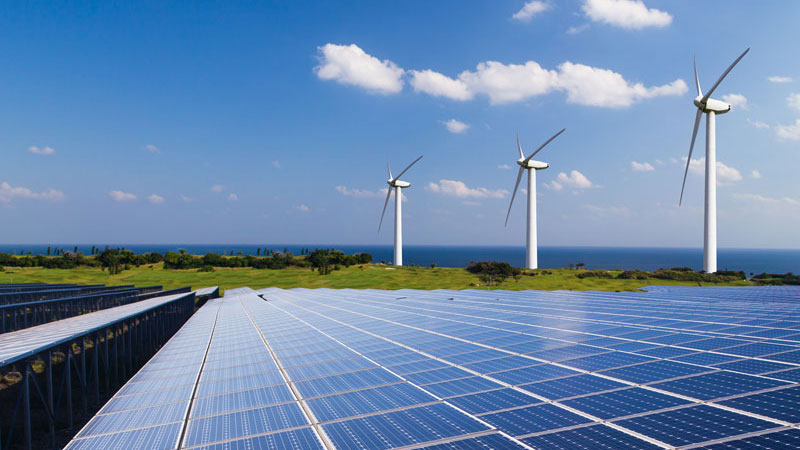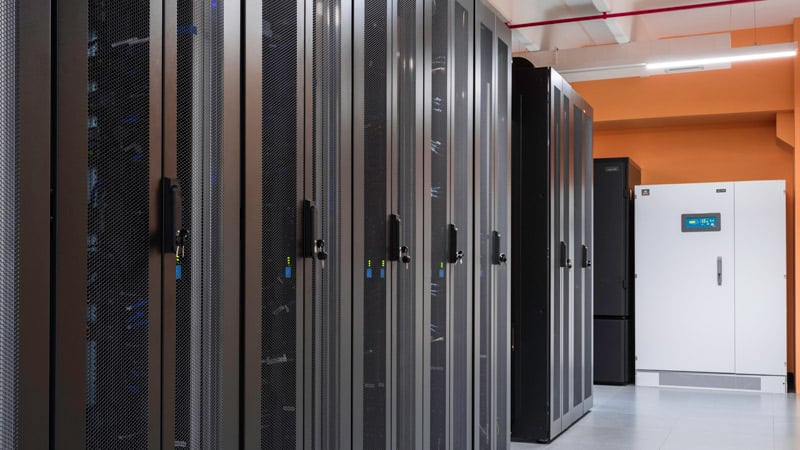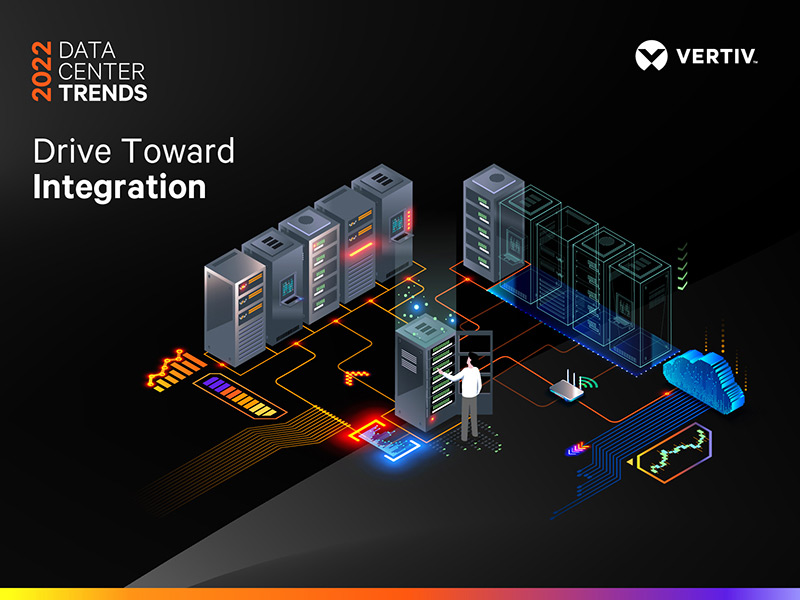Today, there’s more than 18 million servers running in more than 2,500 data centers all across the globe to support everything from our global economy to our increasingly remote workforce. As we continue to see more demand for e-commerce, artificial intelligence, streaming video, virtual reality/augmented reality applications, smart systems, and Big Data analytics, we can expect these numbers to climb drastically. This unprecedented demand for digital services has made the case that data centers have become as essential as public utilities such as electricity, gas and water.
While there’s little debate whether data centers hold a critical place in our society, we cannot ignore their impact on resource consumption and energy use. For data center operators, owners, and designers looking to reduce their carbon footprint or set higher efficiency and sustainability goals, Vertiv launched its Data Center Guide to Sustainability, which offers a number of best practices, business cases for reducing environmental impact, and emerging technologies to help the industry advance toward “net zero” operations. Below are some of the highlights from the guide.
Industry Responds to Calls for Improved Sustainability Goals
In 2020 alone, data centers consumed between 200 and 250 terawatt-hours (TWh) of electricity, or nearly 1% of global electricity demand, and contributed 0.3% of all global carbon dioxide (CO2) emissions. That same year, data centers in the United States used an estimated 174 billion gallons of water. These numbers surrounding data center consumption have drawn concerns from both industry stakeholders and the general public.
Many data center owners and operators have already launched initiatives to improve efficiency and sustainability, but there is much work left to be done. This industry-wide movement has been led primarily by large hyperscalers who have set ambitious goals to become carbon neutral or carbon negative. Apple and Google Cloud have achieved net zero carbon; Amazon intends to do so by 2040; and Microsoft intends to become carbon negative by 2030. In China, technology companies Chindata, Alibaba, Tencent, GDS, and Baidu are all making progress on reducing carbon from data center operations.
The enormous demand for data center capacity and increased technology dependence poses a difficult challenge for organizations trying to reduce emissions. However, by implementing technologies and strategies for reducing environmental impact, organizations can lower operating costs, increase financial flexibility, and reduce the risk of having stranded or obsolete assets. Read more about the challenges and opportunities.
Technologies for Better Data Center Efficiency
In recent years, our industry has introduced several innovations designed to help data center operators increase asset utilization, maximize efficiency, and reduce emissions and water consumption. Below is an overview of some of those technologies, according to the guide:
• Intelligent Power Management: Intelligent equipment and new controls enable data center operators to improve the utilization and efficiency of the critical power systems required to achieve high levels of data center availability. One strategy we’re seeing used by organizations is utilizing the overload capacity designed into some UPS systems to handle short and infrequent demand peaks rather than oversizing equipment based on these peaks.
• Renewable Energy: Renewable energy can be a great tool for reducing carbon emissions. There are numerous ways to leverage renewable sources, including purchase plan agreements, renewable energy certificates, and migrating loads to cloud or colocation facilities that have made the commitment to carbon-free operation. Some operators are looking at opportunities to power data centers through locally generated renewable power, which can be accomplished by matching renewable energy sources with fuel cells, systems that can produce clean hydrogen from renewable energy, and UPS systems with dynamic grid support capabilities.
First Steps for Data Center Sustainability Strategy
For organizations in the initial stages of planning long-term efficiency and sustainability goals, beginning such a journey can be daunting. Fortunately, Vertiv’s guide offers valuable first steps for reducing environmental impact, including:
• Establishing Goals: Similar to the previously mentioned hyperscalers, more data center operators are embracing goals based on the vision of the net zero data center or adopting several of the pillars that make up that vision. According to Vertiv’s guide, a net zero data center typically encompasses:
• Zero losses: Eliminating inefficiencies and maximizing utilization in data center systems.
• Zero carbon: Eliminating carbon emissions from the power consumed by data centers.
• Zero water waste: Eliminating the waste of water for data center operation.
• Zero waste: Eliminating the e-waste created by data center operations.
• Defining Frameworks and Metrics: When establishing measurable goals for reducing environmental impact, emissions will often be the primary target. The Greenhouse Gas Protocol provides standardized global frameworks that industry organizations and their value chain partners can use to understand, aggregate, quantify and reduce emissions. Other metrics organizations can use to track sustainability goals include airflow efficiency, air economizer utilization factor, carbon dioxide savings, and carbon usage effectiveness. Find more metrics and frameworks online.
• Prioritizing Opportunities: Organizations looking to build out their sustainability approach can begin by evaluating existing data center systems and prioritizing opportunities based on goals and available technologies. As plans move forward, operators should continue to prioritize solutions that can achieve desired levels of continuity. Some priorities to consider include increasing asset utilization, decreasing data center water usage, reusing data center heat, and reducing e-waste.
The path toward a more sustainable data center is not paved by a single strategy or piece of technology and implementing these changes will be no easy feat for most organizations. However, the reduced costs, progress toward corporate goals, limited dependence on utilities, and lessened environmental impact from these initiatives can help create significant long-term value for an organization.
Read Vertiv’s Guide to Data Center Sustainability in its entirety to learn more.













